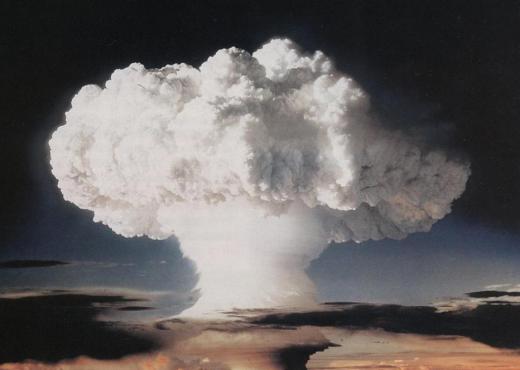What is Thorium?
 Michael Anissimov
Michael Anissimov
Thorium (symbol Th, atomic number 90) is a radioactive chemical element. It is a silvery-white metal at room temperature, but will readily oxidize when exposed to air, and only occurs naturally in oxidized form. Although thorium is not fissile, it can be bred in a nuclear reactor to the fissile isotope U-233, and so has potential as a nuclear fuel source. It is also used as an alloying element with other metals, and is the primary ingredient in gas lantern mantles.
This element naturally occurs in the Earth's crust, at a concentration of around 12 ppm (roughly the same as lead, and three times that of uranium). Although thorium is radioactive, its 14 billion-year half-life is so long that most of that originally found on Earth's is still there. The primary ore for thorium is the mineral monazite, which can have up to 10% by mass; a few other minerals, such as thorianite and euxenite, also contain significant amounts.

Although many countries have large reserves, thorium is not very widely mined; its applications as a metal are limited by its radioactivity, which makes it potentially dangerous if inhaled or ingested. Thorotrast, a compound once used for medical X-rays, was abandoned due to safety concerns. Ironically, thorium's high density and atomic number make it an effective radiation shield, although lead and depleted uranium are more frequently used.
Thorium is not fissile, so it cannot be used to make an atomic bomb or nuclear reactor. However, when this element is inserted into a nuclear reactor, the high neutron flux causes some of it to transmute to U-233, which is fissile. U-233 can then be used to sustain the nuclear reaction and transmute more thorium, creating a closed nuclear fuel cycle, which makes it potentially valuable as an energy source. Historically, natural uranium has been cheap enough as a fuel to make thorium unnecessary. However, with a spike in uranium prices, some governments have developed plans to build thorium-fueled reactors in case of a disruption in the uranium supply; some heavy water reactors, such as the CANDU design, can already use the element.
Before the advent of electric lighting, thorium mantles were frequently used as a light source; when heated with a flame, certain thorium dioxide alloys will glow with a dazzling white light. This glow is unrelated to radioactivity and comes from the chemical interactions with cerium and oxygen. Unless swallowed or otherwise taken into the body, mantles and other thorium products are usually quite safe for everyday use, as the alpha particles the element gives off cannot penetrate the skin.
AS FEATURED ON:
AS FEATURED ON:











Discussion Comments
If U-233 is contaminated with U-232 (nasty) it has a short life. In a thorium reactor (LFTR or MSR) it cannot be extracted without a containment breach -- dangerous! Anyway, U-232 cannot be chemically separated from U-233. U-232 emits Gamma radiation that messes with the equipment needed to make an atomic bomb work.
I have always understood that Thorium can't be turned into a nuclear weapon but in the last 24 hours, I have been told it can by two different people including a senior university lecturer.
They're correct. As stated in the article, how it happens: "the high neutron flux causes some of the thorium to transmute to U-233, which is fissile..."
I have always understood that Thorium can't be turned into a nuclear weapon but in the last 24 hours have been told it can by two different people including a senior university lecturer.
So in general terms only how can that happen ?
Does it have to be in an ion flux or something ?
Post your comments